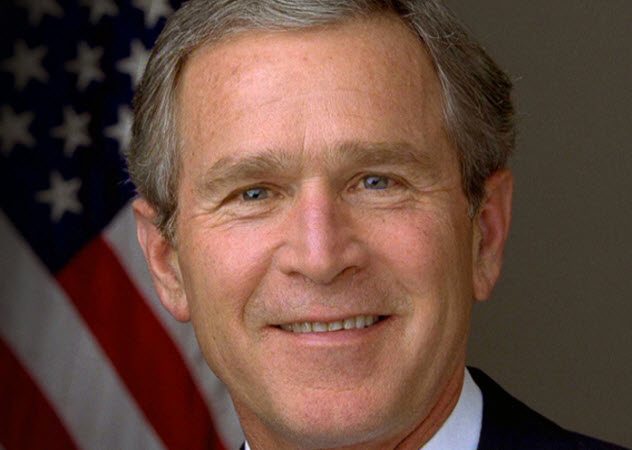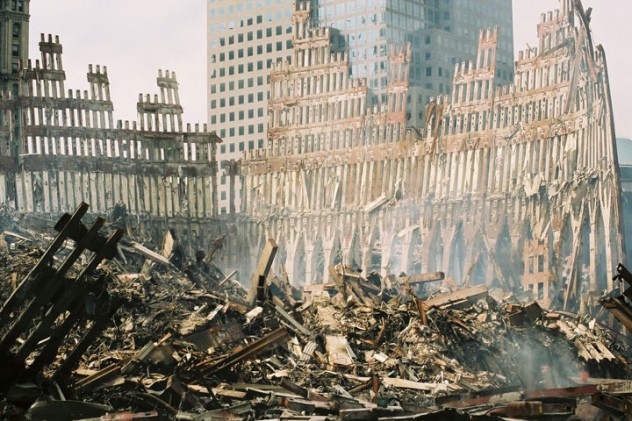 Crime
Crime  Crime
Crime  Humans
Humans 10 Unsung Figures Behind Some of History’s Most Famous Journeys
 Animals
Animals 10 Species That Refused to Go Extinct
 Weird Stuff
Weird Stuff 10 Weird Things People Used to Do at New Year’s
 Our World
Our World 10 Archaeological Discoveries of 2025 That Refined History
 Weird Stuff
Weird Stuff 10 Fascinating Facts You Might Not Know About Snow
 Miscellaneous
Miscellaneous Top 10 Things Crypto Was Supposed to Change & What Actually Did
 History
History 10 Huge Historical Events That Happened on Christmas Eve
 Music
Music 10 Surprising Origin Stories of Your Favorite Holiday Songs
 History
History 10 Less Than Jolly Events That Occurred on December 25
 Crime
Crime 10 Dark Details of Australia’s Gruesome Unsolved Wanda Murders
 Humans
Humans 10 Unsung Figures Behind Some of History’s Most Famous Journeys
 Animals
Animals 10 Species That Refused to Go Extinct
Who's Behind Listverse?

Jamie Frater
Head Editor
Jamie founded Listverse due to an insatiable desire to share fascinating, obscure, and bizarre facts. He has been a guest speaker on numerous national radio and television stations and is a five time published author.
More About Us Weird Stuff
Weird Stuff 10 Weird Things People Used to Do at New Year’s
 Our World
Our World 10 Archaeological Discoveries of 2025 That Refined History
 Weird Stuff
Weird Stuff 10 Fascinating Facts You Might Not Know About Snow
 Miscellaneous
Miscellaneous Top 10 Things Crypto Was Supposed to Change & What Actually Did
 History
History 10 Huge Historical Events That Happened on Christmas Eve
 Music
Music 10 Surprising Origin Stories of Your Favorite Holiday Songs
 History
History 10 Less Than Jolly Events That Occurred on December 25
Top 10 Initial Reactions To 9/11
“This seems to be on purpose.”
That simple phrase, uttered seconds after the second airplane impacted the South Tower on 9/11, was among the day’s most direct, sober journalistic assessments. Its source? A morning show in Dallas, Texas, of all places.
In those first chaotic moments, media, world leaders and everyday citizens – all various levels of stunned and confused – scrambled to understand what was going on and what it meant. Let’s look at ten initial reactions to the worst terrorist attack in US history.
10 Disturbing Raw Videos From 9/11
10 Flying Blind: WABC’s Naïve Nonsense
Fly one plane into a skyscraper, shame on you. Fly two planes into a skyscraper and have a newscaster call it an accident… well, shame on the newscaster.
WABC, New York’s ABC Network affiliate – whose live coverage was simulcast by CNN that morning – was clueless following the second plane’s impact. First, the anchorman failed to realize that the second explosion was in the other tower. Despite the TV monitor clearly indicating otherwise, he assumed the enormous fireball was the fuselage from the initial plane igniting. That made entirely no sense.
Soon, newsroom colleagues alerted him that it was, in fact, a second plane in the opposite tower. What ensued was among the stupidest monologues in broadcast television history:
“Perhaps some kind of navigating system,” the anchorman mindlessly mused, “or some kind of electronics would have put two planes into the World Trade Center within… it looks like about 18 minutes of each other.”
This ridiculous assessment was then repeated, prompting CNN to cut away from WABC and switch to the feed from another network. Respected WABC anchor Bill Ritter remembers hearing the broadcast live from his shower, of all places:
“I remember that the man who was anchoring… said that, for two planes to crash into the Twin Towers, something had to be wrong with the FAA’s radar system. I recall throwing the bar of soap against the shower wall. Hard. And I remember yelling, loudly, ‘WE ARE UNDER ATTACK!’”
9 Prepared and Practical: FOX News Channel
Other networks got it right from the get-go, including the national, 24/7 FOX News Channel. Even before the second plane hit the second tower – all but confirming nefarious intent – that morning’s anchorman, Jon Scott, was able to conduct an interview with a former investigator for the National Transportation Safety Board. Scott aptly asked him:
“Can you think of any reason for a pilot to slam into a building of this height on a day like today,” he asked, referencing that morning’s crystal clear blue sky, “… if it wasn’t intentional?”
When the expert hemmed and hawed about possible pilot distraction and even the angle of the sun, Scott momentarily relented on his suspicions, correctly noting that the towers were near a major air traffic lane, the Hudson River. Just two minutes later, at 9:03am, the second plane struck the adjacent tower before his – and everyone else’s – eyes.
The newsroom gasps audibly, and Scott was understandably flummoxed for a few seconds. Regaining his composure, he simply and directly states what was both unbelievable and completely obvious: “We just saw another one… Another plane just flew into the second tower. This raises…”
Scott pauses, then finds less careful but more appropriate words: “THs HAS to be deliberate, folks.” Vetted or not, Scott knew when to abandon journalistic norms and say what was plainly true.
8 Business as Unusual: WNYC Radio’s Silly Inflexibility
Many stations – especially radio broadcasts – continued to run commercial breaks through the early moments of the crisis. But WNYC, the New York City affiliate of advertisement-free National Public Radio, had no such constraints. With the World Trade Center in flames within eyesight of its Manhattan studio, the newsdesk had a unique opportunity to cover a global event developing right in their backyard.
At first, they nailed it. The pivotal journalistic moment was when the second plane hit, essentially eradicating any chance that this was merely an accident. For their part, WNYC instantly recognized that this was a separate plane impacting the other tower; there was incredulity, but no confusion. Eyewitness accounts ensued for the next several minutes. And then, less than 10 minutes after the second plane hit…
… they cut away for a story about President Bush’s childhood literacy tour?
That’s right, they ran a canned piece about President Bush’s scheduled trip to Florida promoting childhood literacy, including news that First Lady Laura Bush would be testifying to Congress later that day about early learning (spoiler alert: both Mrs. Bush and Congress had to cancel). The mundane segment ran for FIVE FULL MINUTES as the story of the century unfolded.
7 The Coolest Head in NYC: Pat Kiernan (NY1 News)
If you’ve never lived in New York City, Pat Kiernan is among the most famous people you’ve never heard of. Since 1997, he has anchored the city’s NY1 cable news on weekday mornings. Quick-witted and wryly humorous, Kiernan makes due with the station’s tight budget, including segments where he literally reads that morning’s newspapers aloud.
On 9/11, for a critical half-hour the only camera NY1 had on the Twin Towers was several miles away; Kiernan excelled despite the detriment. Interviewing an eyewitness, he instantly discerned not only which Tower was hit first but which side of it (North Tower, north face). Without going overboard, he dubbed the first crash suspicious – saying an accident on such a clear day was hard to fathom – and worried aloud for those gathered in Windows on the World, the restaurant atop the North Tower.
When the second plane hit, the camera angle was so far away that Kiernan couldn’t instantly tell it was a plane. Still, he recognized that it was the other tower, and quickly verified the impact’s origin.
Kiernan’s finest (albeit horrifying) moment that morning came when the South Tower, the first to fall, collapsed at 9:59am. Most broadcasters, even ones with closer, sharper video feeds, initially thought the collapse was partial. In under a minute, Kiernan drew the correct conclusion, stating simply: “That tower’s not there anymore.”
6 Shockjock and Awe: Howard Stern Calls For Blood
One decidedly unmeasured immediate response came from a media personality known more for his humor.
Syndicated morning radio show host Howard Stern, the self-proclaimed “King of All Media,” was live on the air at his New York City studio when he learned of the first plane’s impact shortly before 9:00am. The shockjock pivoted from a topic indicative of his usual content – a story about how he almost slept with Pamela Anderson – and, along with the rest of the world, speculated about how a plane could have flown into the area’s tallest skyscraper.
Then the second plane hit, and the Howard Stern Show took a darker turn.
Within minutes, Stern opined that “We are entirely too lax in this country.” He proceeds to speak with several of the program’s not-so-sophisticated regulars, dialing in from around the city. By 9:12am, one references “those towelhead bastards”. The conversation devolves into Stern and co-host Robin Quivers calling for the indiscriminate carpet-bombing of the entire Middle East.
Despite the broadcast’s political incorrectness and bellicosity, many appreciated Stern’s real-time raw emotions. Unshackled by journalistic constraints, Stern was able to wear his fear on his sleeve, and say aloud what many others were undoubtedly thinking. Recently, Conan O’Brien praised it as the day’s most honest coverage.
5 “BOMB! RUN!”: The Commuter Crush
Not surprisingly, the World Trade Center had rail tracks underneath it. At Cortlandt Street station, a train operator reported an “explosion” just one minute after the first plane struck. Subway service was halted, and the station destroyed in the collapse. Luckily, no one in the subway system died that day.
But there was another rail line: the Port Authority Trans Hudson commuter trains, better known as PATH. Buried below not only the towers but a subterranean mall, a PATH train packed with New Jersey commuters pulled into the WTC Station right as the first plane struck. No one felt it, and the train deboarded.
I know, because I was on it.
A set of extremely long escalators carried commuters up to the mall, where they either ascended to their WTC offices, exited via street level or transferred to the NYC Subway. A minute or two after impact, those on the standing-room-only escalators heard a cascading, human-telephone cry from above: “BOMB! RUN!”
Too many people + panic running = trampling. I saw a few folks fall in front of me, and was too preoccupied with living to look back. I exited the north side of Tower One – the same side and building impacted by the first plane – less than five minutes after impact. While no official trampling deaths were recorded, it’s impossible to be certain considering the disaster’s magnitude.
4 Pet Goat-gate: George W. Bush’s Bad Rap

When the second plane hit, the president of the United States was reading “The Pet Goat,” a book designed to help young children learn to read. It was not a very presidential look, and Bush drew mockery for remaining seated for seven minutes after Chief of Staff Andrew Card whispered the news in his ear, adding “America is under attack.”
As poor as Bush’s long-term response became – the 2003 invasion of Iraq is universally castigated – criticisms of his reactions that day are undeserved.
First, the book. Yes, it was about a pet goat. He was reading to young kids. Was he supposed to be reading Sophocles? Penthouse Forum perhaps? And upon learning of the second impact, was he supposed to jump up and scream “run for your lives!” in front of six-year-olds? What, pray tell, was Bush going to do about airliners flying into major landmarks from an elementary school in Sarasota, Florida?
From there, the “Where was Bush all day?” critiques are equally silly. Upon learning of a third plane hitting the Pentagon – and after receiving threats that “Angel,” Secret Service code for Air Force One, was next – the smart move was a fighter jet-escorted flight to a military base. That’s what Bush did, staying in close contact with Vice President Dick Cheney, who was directing the initial response from an underground White House operations bunker.
Bush was in an optically impossible situation that day – one that would have made any leader look aloof and aimless.
3 Parties and Panic in Palestine: Yasser Arafat
While Bush was as measured and rational as possible, one world leader was sweating bullets. Palestinian National Authority president Yasser Arafat was reportedly terrified that the United States would blame his questionably loyal countrymen for the attacks.
Arafat had good reason to be nervous. For starters, Palestinians were seen celebrating the Towers’ collapses; in the West Bank city of Nablus, about 3,000 people poured into the streets, chanting “God is Great” and — in their traditional gesture of celebration — handing out candies. Not a good look, Yasser.
Nor was the timing great. The attacks occurred just a year after the failed 2000 Camp David Summit, after which most participants – including US president Bill Clinton – blamed Arafat for never bringing a serious peace offer to the negotiating table. Arafat was reportedly furious with Clinton’s assessment, even though his priorities were plain as day: Ararat did little to quell the riots that broke out throughout Gaza shortly after the summit began, indicating his reluctance to strike a deal.
Fortunately for Arafat, it quickly became clear that his organization had neither a realistic motive nor the competence to pull off four simultaneous suicide hijackings. Given the terrorists’ Saudi roots and Osama bin Laden’s recent history of tightly coordinated mass bombings, Al Qaeda was rightly fingered and Arafat was off the hook.
2 “This is Not a Drill”: The FAA and US Air Force
At 8:34am, American Airlines Flight 11 hijacker Mohamed Atta mistakenly broadcasted a message to air traffic controllers instead of the plane’s petrified passengers. “If you try to make any moves,” he said, “you’ll endanger yourself and the airplane. Just stay quiet.”
Just six minutes later, Boston’s Federal Aviation Administration (FAA) informed military air defense officials that “we have a hijacked aircraft and I need you to get some sort of fighters out here to help us out.” The scramble order was made official at 8:46am – just as Atta slammed the plane into the North Tower.
The military, then, had an order to scramble jets… but to where? The frantic confusion is evident from the FAA/NORAD audio recordings. Soon, though, it became evident that other airliners had been hijacked, and the first fighters took off at 8:53am.
They didn’t have a chance to do anything about the next two impacts – Tower Two and the Pentagon, respectively. However, it’s likely the fighters would have intercepted United Flight 93 before it reached its target – the Capitol Building or White House – had passengers not stormed the cockpit and forced it to crash into a Pennsylvania field.
Horrifically, the fighter pilots en route did not have missiles on their jets, and instead would have been forced to ram the airliner, sacrificing their own lives in addition to those of the passengers.
1 When the Networks Couldn’t: The Photojournalists

There was a reason television stations didn’t broadcast up-close images of the towers burning that day, and it had nothing to do with technological limitations. They didn’t zoom in because doing so would have clearly shown people leaping to their deaths from the upper floors.
Instead, the day’s most harrowing images came from photojournalists, including freelancers and amateurs. Most notably, Associated Press photographer Richard Drew captured a man plummeting to his death from the North Tower. Dubbed “The Falling Man,” the picture was so riveting that most newspapers refused to publish it. Later, the photo became the basis of a documentary in which the doomed man’s identity was discovered.
But it wasn’t just professionals snapping shots that day. The event left millions of people with a clear sightline of the devastation, many of whom took some of the most compelling, horrifying photos of that day. Others shot with handheld video cameras, including footage so close that desperate victims trapped in the upper floors can be seen stacked atop each other, leaning out broken windows for air.
One photojournalist even lost his life that day. Freelancer William Biggart took dozens of dramatic shots, including the South Tower’s collapse from shockingly close. Unfortunately, Biggart tried to get even closer to the North Tower, and died when it imploded. Rescue workers found his body four days later along with his intact digital cameras.








